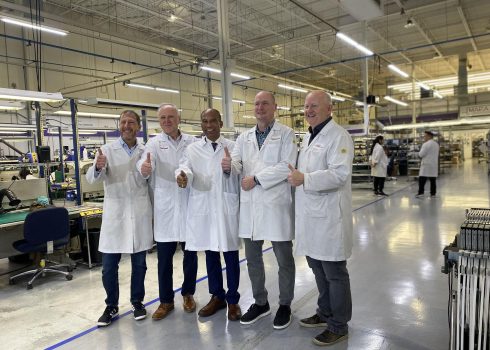Pontosense is changing how we monitor ourselves by replacing bulky wearable devices with artificial intelligence and advanced sensors. This change in how biometric data is collected and analyzed may seem like something out of science fiction. Still, for Pontosense co-founder and CTO Yihong Qi, it’s another example of his long line of innovative advancements.
If you remember the days of cellular phones having external antennas and how they could quickly get bent, then you have Qi to thank for today’s internal antennas inside iOS and Android smartphones. Qi led the development of the technology behind internal antennas during his 15-year career at Research in Motion, the pioneers of smartphone technology. Throughout his career, Qi has amassed 500 patents, published more than 140 academic papers, and founded five technology businesses—including Pontosense.
The company is developing what it calls Wireless Intelligence Sensing. The technology uses a coin-sized contactless radio frequency (RF) sensor to monitor biometrics like breathing rate, heart rate, and heart rate variability in everyday technology. The sensors can be used in applications ranging from monitoring a driver’s heart rate while driving to providing remote fall detection for older adults who live alone.
Qi says that camera-based fall detection technology available today can provide families with peace of mind, but it comes with a trade-off in privacy. He says fall detection is an excellent example of how the Pontosense technology can protect people while protecting their privacy.
“Our technology does more than improve quality of life. It also impacts the family because now they can ensure their loved ones are safe without cameras. It can monitor the person’s health, know if they’re asleep, without needing to see them,” he says.
Like how the internal antenna helped make smartphones smaller, Qi says that Pontosense sensors can change how traditional electrocardiograms (ECGs) are performed. Today, patients who require an ECG outside of a hospital for monitoring have to wear a large hard drive-sized unit with 12 leads connected to various points on their body. Pontosense senors can potentially replace that with something as small as a pack of matches.
“You can’t even take a shower for days while wearing a portable ECG. We can potentially replace that with something a patient won’t even notice. Then, if something does happen while the patient is being monitored, the nurse or doctor can be notified. It could even call for an ambulance if that was required,” Qi says.
Qi chose the Greater Toronto Area for multiple reasons, from its proximity to internationally recognized universities to its vast numbers of experienced tech talent. He says that Markham’s location in the automotive corridor also opens up opportunities to have Pontosense sensors be part of a growing move to intelligent vehicles. Pontosense is linked with Markham’s ecosystem, including ventureLAB, bringing high-tech growth opportunities to the region. According to Qi, the City of Markham, its talented people and great infrastructure, is a top destination for job growth and IP ownership.
“We have a lot of companies who are producing high-performance electronics for vehicles. As we move from fossil fuel-powered cars to electric vehicles, the demand for features will only grow. There’s a need for sensors for batteries, electric motors, and now, to make cars smarter with sensing,” Qi says. “This corridor from Detroit to Windsor to Woodstock to Cambridge and Oshawa will have a lot of opportunities.”















